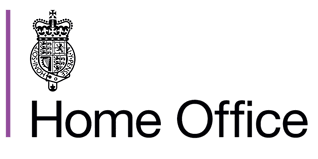PRESS RELEASE : New phonics check will identify thousands of children needing extra reading help [September 2011]
The press release issued by the Department for Education on 16 September 2011.
Study finds the short check is popular with pupils
Thousands of children will receive the extra support they need to become confident, fluent readers thanks to the Department for Education’s new phonics check, an independent study today reveals.
In a pilot, 43% of teachers said they had been able to pinpoint 6-year-old pupils with reading problems of which they were not previously aware.
Those children will now be given additional support to improve. The study of the pilot also found that:
- the majority of teachers found most aspects of the check appropriate;
- most pupils found the check to be a positive experience;
- it took on average between four and nine minutes for each pupil to complete.
The check, supported by three-quarters of parents in a survey by the National Confederation of Parent Teacher Associations, was piloted in 300 schools this summer and will be rolled out across England next year. All Year 1 pupils will be screened between 18 and 22 June 2012. The check involves teachers taking pupils through a booklet of 40 words on a one-to-one basis.
If the pilot’s success rate is replicated when it is rolled out, thousands more teachers will be able to identify children who need extra reading help.
In this year’s tests for pupils leaving primary school:
- 1-in-6 11-year-olds did not reach the reading standard expected.
- 1-in-10 boys aged 11 can read no better than a 7-year-old.
England has also slipped down the international table for reading in primary schools. The Progress in International Reading Literacy Study (PIRLS) of 10-year-olds saw England fall from third out of 35 countries in 2001 to 15th out of 40 countries in 2006.
Schools Minister Nick Gibb said:
Ensuring that every child leaves primary school as a fluent and confident reader is key to raising academic standards overall and is important in closing the attainment gap between those from poorer and wealthier backgrounds. It is unacceptable that 10% of boys aged 11 can read no better than a 7-year-old.
The new check is based on a method that is internationally proven to help children learn to read and the evidence from the pilot is clear – thousands of 6-year-olds, who would otherwise slip through the net, will get the extra reading help they need to become good readers, to flourish at secondary school and to enjoy a lifetime’s love of reading.
This study finds that the check will be of real benefit to pupils but takes just a few minutes to carry out and is a positive experience for most children.
High-quality academic research from across the world shows that the systematic teaching of synthetic phonics is the best way to teach children to read, especially those aged 5 to 7.
The main findings of the study, carried out by the Centre for Education and Inclusion Research (CEIR) at Sheffield Hallam University for the Department for Education, are that:
- 43% of pilot schools were able to identify pupils with phonics problems of which they were not already aware.
- all aspects of the check were seen as appropriate by at least 74% of teachers.
- Three-quarters of pilot schools said the check assessed phonic decoding ability accurately. Most schools interviewed in the pilot also plan to use the results to inform their teaching and planning.
- Most teachers and pupils understood the purpose of the check correctly.
- More than 90% of teachers said the content of the check was suitable on most levels.
- 83% of teachers said the number of words was suitable; 80% said the type of vocabulary was suitable; and 74% thought the non-words used were suitable.
- The check took on average three hours for schools to prepare for the check, and 12-and-a-half hours to administer it.
- 65% of schools found the resources used to administer the check “straightforward” or “very straightforward” to manage.
- 89% of pilot schools said the guidance provided to them by the Department for Education was ‘useful’ or ‘very useful’.
- Pilot schools wanted detailed results of the check. Almost all 97% wanted pupil-level results and 88% wanted commentary on national-level results. Some 90% of schools wanted benchmarking data to help them set appropriate expectations for their pupils.
- The experience of the check was positive for most pupils. Some 62% of pilot schools felt the experience had been positive for all pupils, while 31% said it was neither positive nor negative.
- The check took on average between 4 and 9 minutes to complete per pupil.
Nick Gibb added:
Overall the report provides sufficient evidence to roll out the check nationally next year. There are also some helpful suggestions from teachers, and we will consider making some amendments to the check when it is introduced for all Year 1 pupils next summer.
The Department for Education is also launching a catalogue of approved phonics resources for teaching pupils and training teachers. Primary schools with Key Stage 1 pupils will be able to claim up to £3,000, if they match that funding, to spend on these approved materials.
Schools will decide which of the resources will help them to deliver high-quality phonics teaching for their pupils and will be able to buy products and training with the match-funding any time up to March 2013.
How phonics works
Phonics focuses on sounds rather than, for example, having children try to recognise whole words.
In analytic phonics, words are broken down into their beginning and end parts, such as ‘str-‘ and ‘eet’, with an emphasis on ‘seeing’ the words and analogy with other words. In synthetic phonics, children start by sequencing the individual sounds in words – for example, ‘s-t-r-ee-t’, with an emphasis on blending them together. Once they have learned all these, they progress to reading books.
The ‘synthetic’ part comes from the word ‘synthesise’, meaning to assemble or blend together. Children who learn using synthetic phonics are able to try new words working from sound alone, whereas those using analytic phonics are more dependent on having prior knowledge of families of words.
High-quality research evidence
In Clackmannanshire, Scotland, a seven-year study of the teaching of synthetic phonics to 300 children found they made more progress in reading and spelling than other children their age.
A 2005 Australian report, Teaching Reading, said:
The incontrovertible finding from the extensive body of local and international evidence-based literacy research is that for children during the early years of schooling (and subsequently if needed) to be able to link their knowledge of spoken language to their knowledge of written language, they must first master the alphabetic code – the system of grapheme-phoneme correspondences that link written words to their pronunciations. Because these are both foundational and essential skills for the development of competence in reading, writing and spelling, they must be taught explicitly, systematically, early and well.
The US National Reading Panel report of 2006 said:
Systematic synthetic phonics instruction had a positive and significant effect on disabled readers’ reading skills. These children improved substantially in their ability to read words and showed significant, albeit small, gains in their ability to process text as a result of systematic synthetic phonics instruction. This type of phonics instruction benefits both students with learning disabilities and low-achieving students who are not disabled. Moreover, systematic synthetic phonics instruction was significantly more effective in improving low socio-economic status (SES) children’s alphabetic knowledge and word reading skills than instructional approaches that were less focused on these initial reading skills… across all grade levels, systematic phonics instruction improved the ability of good readers to spell.



